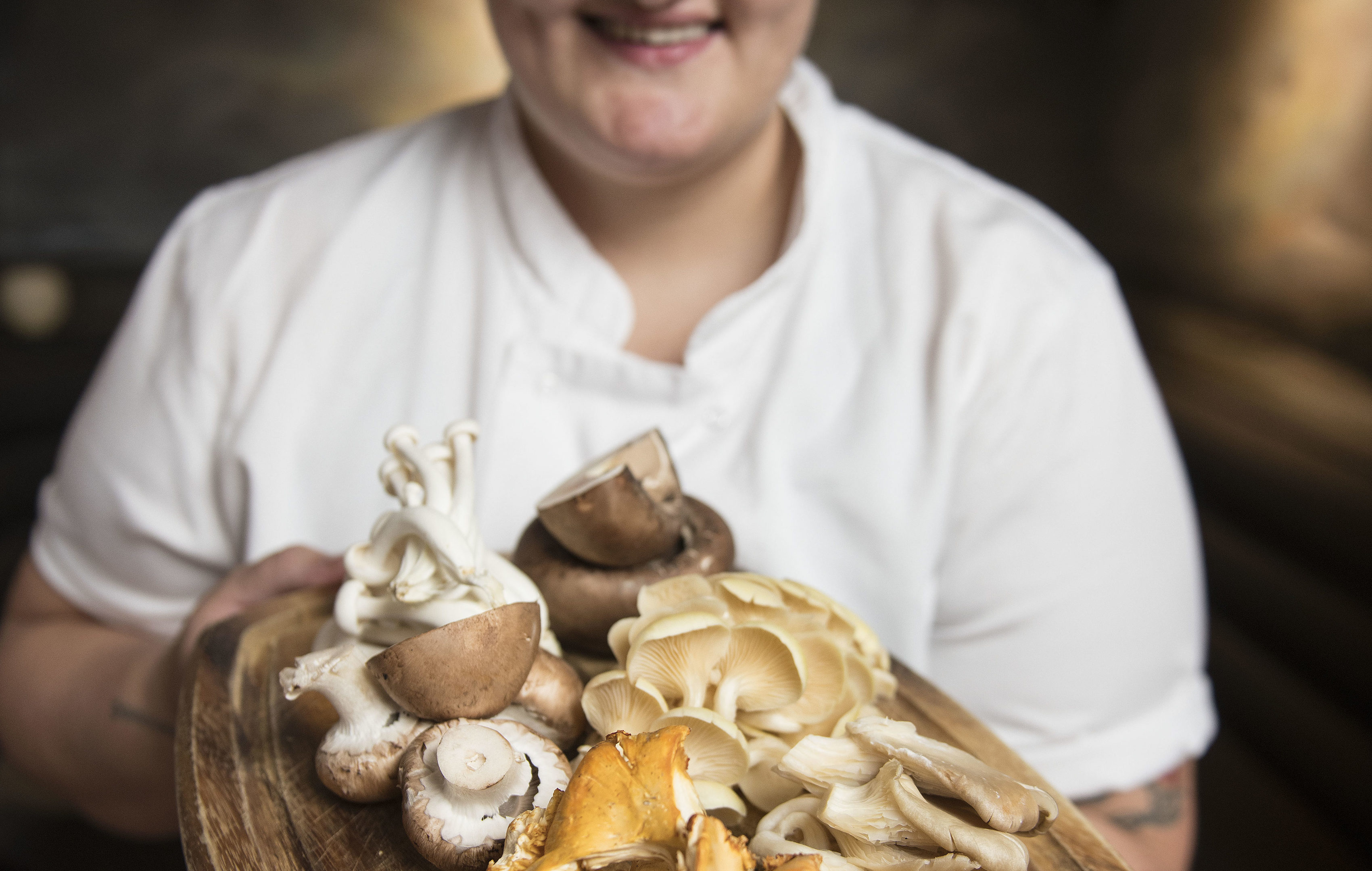
THE long, hot summer is about to yield an unexpected autumn bonus – one of the biggest wild mushroom crops for years.
Experts say the unusually warm and dry June and July delayed the fungi growth, meaning the recent wet, humid conditions have seen mushrooms grow in “ridiculous quantities”.
That’s good news for the increasing amount of foragers who are going straight to nature to fill their dinner tables.
Forager and research herbalist Monica Wilde, from West Lothian, says everywhere is currently a breeding ground for mushrooms.
“The weather is perfect and we know it’s going to be a very good year,” she said.
“There will be rich pickings, from the middle of towns to the wilds, a huge abundance.
“Because we had a long, dry summer, the mushrooms held back a bit. But with these current optimal conditions they are all coming out together.
“Mushrooms that would have grown in stages, such as chanterelles, which usually start fruiting in July, needed moisture so are growing now.
“And woodland species like porcini are out in ridiculous quantities.
“Rather than fruiting in July, August and September, we’re getting several flushes all at once.
“The summer delayed the season, but they’re really going for it now.”
And early this week is likely to be especially good – thanks to a little help from the moon.
“Friday was a perigee, the point in the orbit of the moon when it is closest to the Earth. Up to that point mushroom growth slows down then afterwards it quickens up.”
Monica, a member of the Association of Foragers, organises a number of popular foraging courses throughout Scotland.
“I’ve been teaching for 12 years and the courses seem to have sold out particularly quickly this year.
“There has been a huge rise in awareness of organic food and clean eating, with young people realising nature is part of their lives and without that connection we don’t do very well.
“We have amazing restaurants and chefs in Scotland, and foraged ingredients – the ultimate extension of local sourcing – are appearing more often on their menus.”
Mycologist Patrick Harding, who has written four books about mushrooms, agrees.
“TV chefs such as Hugh Fearnley-Whittingstall have helped bring about huge change,” he said.
“People have realised there is more to mushrooms than the boring white buttons ones, which is all you used to be able to buy.
“I started running foraging courses 40 years ago and only a few people would come – and they would be embarrassed to tell their friends.
“I think people coming here from countries such as Poland, France and the Czech Republic, where kids are brought up knowing about edible fungi, also brought about change.”
But Patrick warned people foraging for mushrooms must be able to identify which are edible and which are poisonous.
“Nicholas Evans, the man who wrote The Horse Whisperer, and his family ate poisonous mushrooms in Scotland,” he continued.
“He required a kidney transplant and that is a very good example to Scotland. Those who know how to identify them are fine, but often a species looks very similar to the edible ones.
“There are apps available now, but those just go on visuals and not the smell, taste, touch or colour of the spores – all of that information is available in books.”
Monica, who recently saw swathes of destroying angels, one of the most poisonous mushrooms, says people very quickly learn to tell between those that are and aren’t edible.
“If you can tell the difference between a lettuce and a cabbage, you have the mental power needed,” she insisted.
“It’s just that we’re not used to looking at mushrooms, but once you really start to look at them, you learn very quickly.
“When you go out for the first time, everything looks similar.
“It’s just the same as knowing you cut the leaves off of rhubarb before you eat it and that you don’t drink 10 cans of energy drinks in one sitting – there is no need to be afraid once you have learned.”

Enjoy the convenience of having The Sunday Post delivered as a digital ePaper straight to your smartphone, tablet or computer.
Subscribe for only £5.49 a month and enjoy all the benefits of the printed paper as a digital replica.
Subscribe